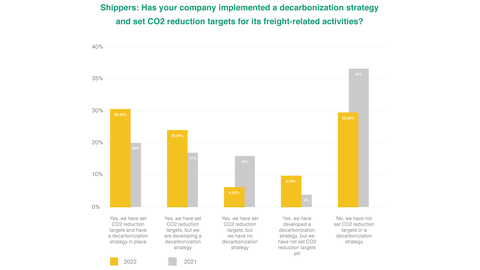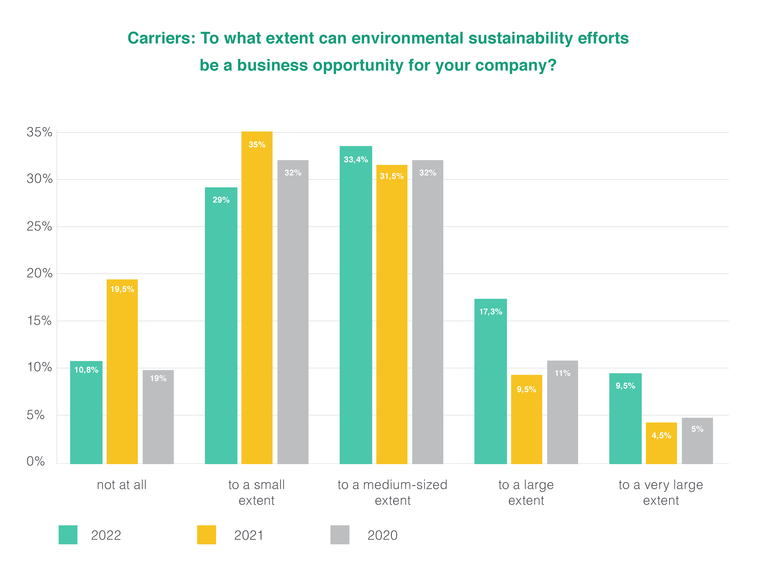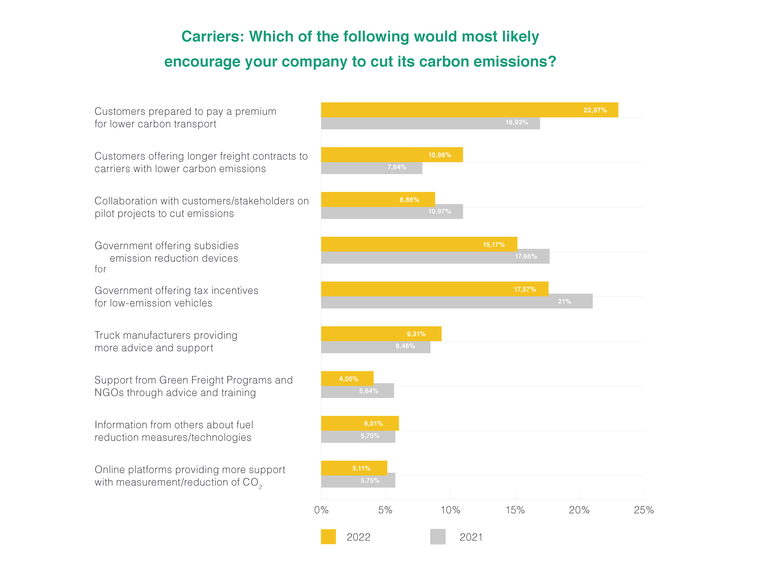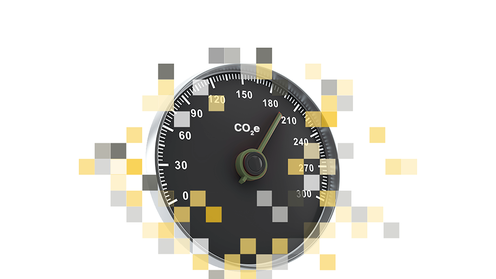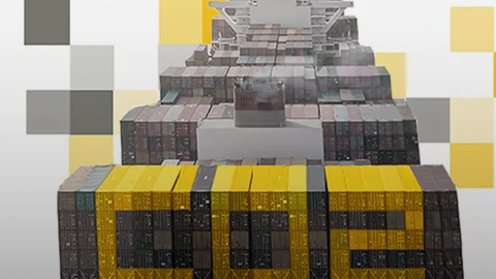Our latest findings in partnership with Kuehne Logistics University and Smart Freight Centre deliver much anticipated evidence that the decarbonization of freight is well underway.
In May 2022, 340 shippers and carriers were surveyed on the topic of decarbonization and the path to net zero. Real life insights and experiences articulated in the results reveal major changes in emissions tracking and reporting compared to activity recorded throughout the last two years. Both authors, experts Alan McKinnon, Professor of Logistics, Kuehne Logistics University and Alan Lewis, Technical Director, Smart Freight Centre agree this can be described as an encouraging leap forward.
The report is available to download for free now. If you’re curious about progress in the field of sustainability and keen to participate in sustaining positive change, we recommend taking the time to digest the data and commentary in full.
Read on for our summary of key findings.

